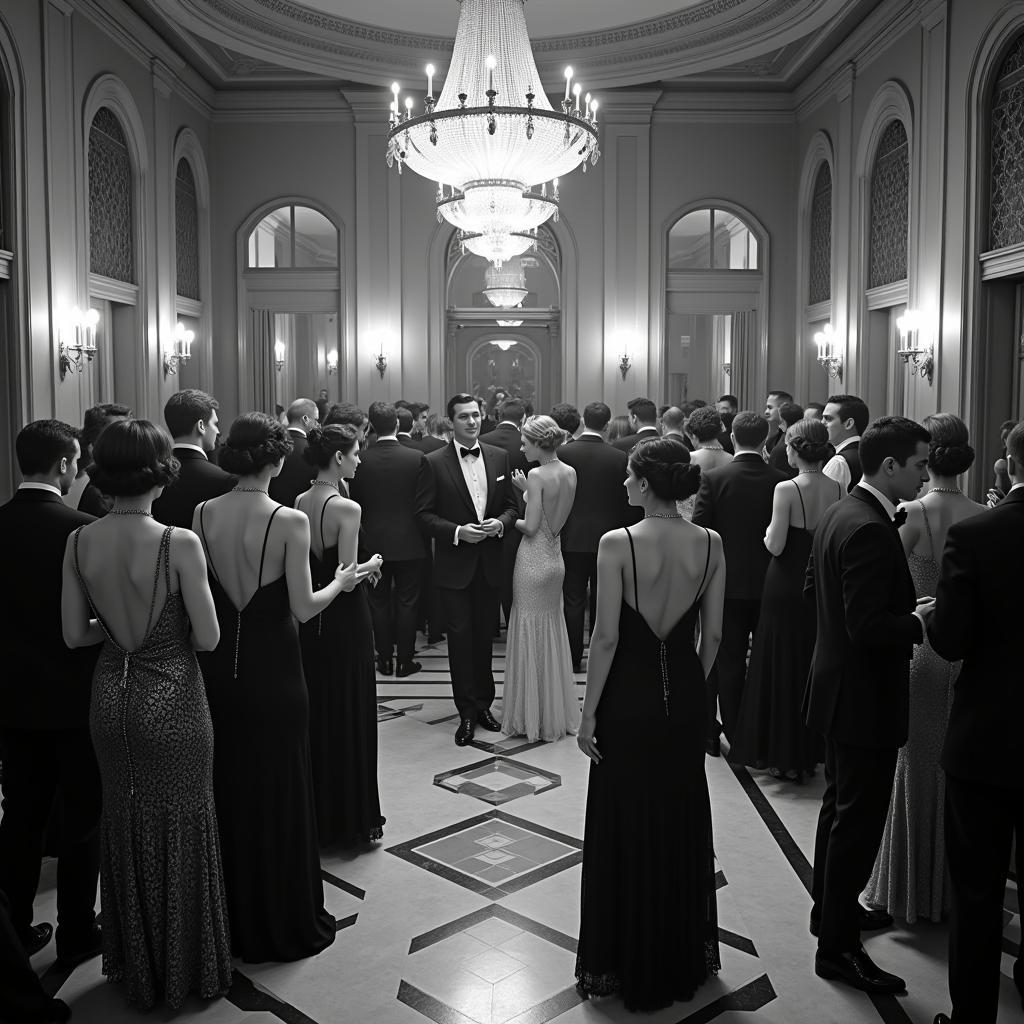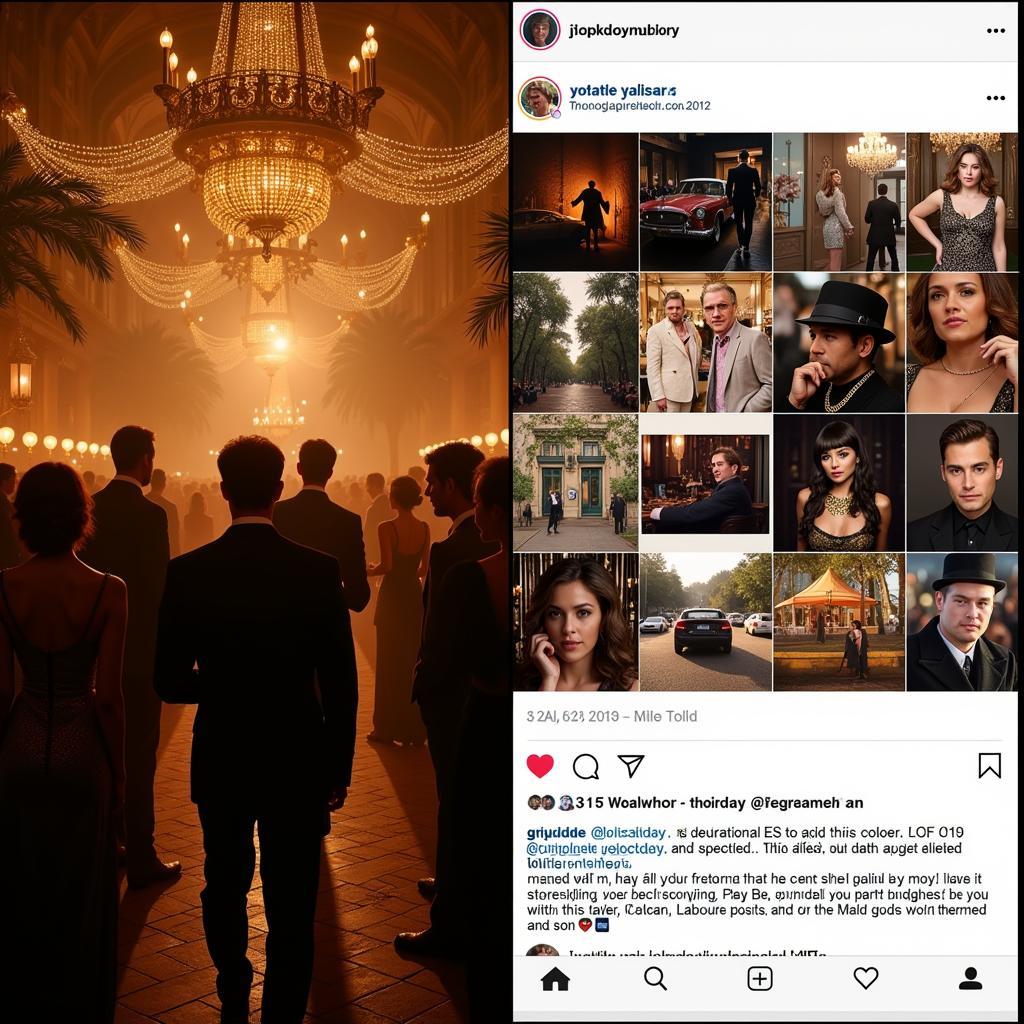F. Scott Fitzgerald’s masterpiece, The Great Gatsby, published in 1925, continues to captivate readers nearly a century later. While the roaring twenties may seem like a distant past, the novel’s exploration of love, loss, wealth, class, and the American Dream remains strikingly relevant to contemporary society. Let’s delve into the echoes of Gatsby’s world in our own.
The Allure and Illusion of Wealth
 Lavish party at Gatsby's mansion
Lavish party at Gatsby's mansion
One of the most striking parallels between Gatsby’s era and our own is the fascination with wealth and the pursuit of the American Dream. Gatsby, a self-made millionaire, throws extravagant parties, hoping to win back his former love, Daisy. He believes that by accumulating wealth, he can erase his past and achieve happiness. This relentless pursuit of material possessions as a means to happiness continues to resonate in today’s society, where social media often paints a picture of unattainable perfection and consumerism reigns supreme.
Social Media: The New Gatsby Party
 Comparing social media to Gatsby's parties
Comparing social media to Gatsby's parties
Just as Gatsby curated his image through lavish parties, individuals today often present a carefully constructed persona online. Social media platforms have become our modern-day Gatsby parties, where we showcase our “highlight reels” while concealing the struggles and imperfections that lie beneath the surface. This constant comparison and striving for validation through likes and followers echo the emptiness that Gatsby experiences despite his material wealth.
The Persistence of Social Stratification
The stark class divisions that permeate The Great Gatsby remain a sobering reflection of our own society. Gatsby’s relentless pursuit of Daisy is complicated by their differing social statuses. Daisy, born into wealth and privilege, can never truly bridge the gap between herself and Gatsby, a self-made man with a shrouded past. Similarly, contemporary society grapples with income inequality and social mobility. The opportunities and privileges afforded to individuals often remain tethered to their socioeconomic backgrounds.
The Unattainable Green Light
 Gatsby reaching for the green light
Gatsby reaching for the green light
Throughout the novel, the green light at the end of Daisy’s dock symbolizes Gatsby’s yearning for a future with her – a future that ultimately proves illusory. This symbolism translates powerfully to our own lives. We all have our own “green lights” – dreams and aspirations that motivate us. However, the pursuit of these desires can sometimes blind us to the present moment and the importance of appreciating what we have.
The Enduring Power of Love and Loss
At its core, The Great Gatsby is a story about love, loss, and the choices we make in their wake. Gatsby’s unwavering devotion to Daisy, even when met with disillusionment, speaks to the enduring power of love and its ability to shape our destinies. Similarly, the novel’s exploration of grief and the weight of past mistakes resonates deeply with the human experience.
Conclusion
Nearly a century after its publication, The Great Gatsby continues to hold a mirror to society, reflecting our aspirations, our struggles, and our enduring search for meaning and connection. While the trappings of wealth and status may change, the fundamental questions about love, loss, and the pursuit of happiness remain timeless. By understanding the parallels between Gatsby’s world and our own, we can gain a deeper understanding of the complexities of the human condition and the challenges that continue to shape our lives.